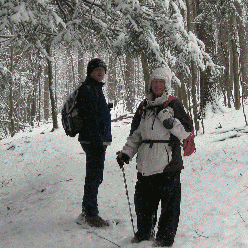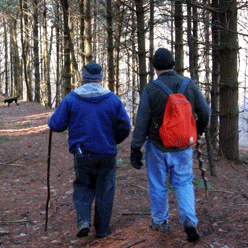







Hiking boots are probably the most important part of the day hiker's essential gear list. What type of hiking boot you should wear depends greatly on the type of terrain you plan to hike most. If you plan to hike aggressively and often on demanding trails, a classic type of hiking boot with or without waterproofing is what you'll need. But if you plan to hike mainly flat trails with occasional gentle inclines, a good pair of trail-walking shoes will do just fine.
These are especially important if you plan to hike in open terrain. In addition to shielding your face from the sun, a hat will help prevent heat loss if the sun slips behind some clouds and the temperature suddenly drops.
Day Packs range in capacity from about 1,500 cu. in. to 2,000 cu. in. (overnight and expedition packs range from 2,200 to 5,500 cu. in.). Some of today's day packs have many of the same features as their bigger cousins – internal frames, padded backs, straps and waistbelts, plus side pockets and daisy chains for lashing on extra gear. The pack you choose should be based on the type of hiking you plan to do. A book pack with a padded back may suffice for an afternoon excursion along a local nature trail. But a full day of hiking will probably require something more. Bottom line: A day pack should be made of lightweight, water-resistant fabric and have all the features you need for your type of hiking. Outside mesh pockets for handy access to water bottles and trail guides are features appreciated by many hikers. Other easy-access pockets for holding snacks, a camera, compass, etc., are common features of all good day packs.
Bring plenty of water along and before you start off, drink some water so you're well hydrated and energized. If you know you will encounter a good source of water on a long hike, bring a water purifier along and filter any water you drink. Also consider water reservoirs with a drinking tube instead of or in conjunction with bottles. Many day packs have a hydration sleeve to insert the reservoir and the tube will always be handy, allowing you to drink on the go.
Plenty of hikers find hiking in trail shorts and a T-shirt appropriate for light day hiking in areas not too far removed from civilization, like local parks and on short nature trails. But a better and safer choice for longer hikes is a shirt made from a synthetic or a synthetic-blend fabric. Shirts made from these fabrics, unlike cotton, will not readily hold moisture and will help transfer perspiration to the outside for quick evaporation (a perspiration-moistened T-shirt, on the other hand, will remain wet and can cause a chill, or worse, if the temperature suddenly changes or the wind picks up). If you are hiking in areas where you're apt to encounter wind or biting insects, a light pair of trail pants is a good thing to be able to pull from your day pack, along with a windshell. Bring an extra pair of (noncotton) hiking socks, too. These will be nice to slip on after lunch, or should your other socks get wet.
Even if you are hiking only a short distance, a hiking pole (or two) will make the trip easier and more enjoyable. They offer added security on wet, slippery trails and more stability when crossing streams. They are especially helpful, and take a lot of the strain off the knees and thighs, when you are descending steep slopes or when you hit sharp downturns in the trail. Unlike hiking sticks of the past, modern hiking poles are lightweight and collapsible so they are easy to pack.
Carry more food than you think you will need on any hike. It's better to bring extra snacks home with you than to go hungry. Carbohydrate-rich energy bars, granola, trail mix and fruit provide an instant pick-me-up on the trail.